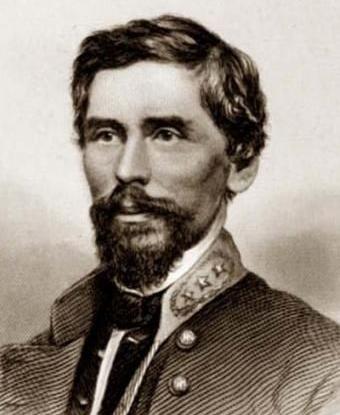 |
| Gunhawks comic: from Wikipedia |
During my childhood and early teen years
I was an avid comic book reader. One particular fascinating comic book was a Marvel
Western series called Gunhawks. The
main character in the comic was a black gunslinger named Reno Jones along with
his childhood friend Kid Cassidy. Reno is a freed slave who lived a happy life on
the plantation with a kindly master where he and Cassidy grew up as friends.
But the Union Army attacked his home and the girl he loved. Rachel Brown became a captive of the Yankees and in response Reno joined the Confederate
army. At the end of the war, Reno and Kid Cassidy roamed the west on a quest to
find Reno’s lover Rachel. The publication of the Gunhawks comic was in the early Seventies but the Gunhawks was an example of a series of
stories that began after the success of the Civil Rights Movement which claimed
that the Confederate army had thousands of free blacks and slaves that fought
alongside white Rebel soldiers.

Today the proposition that the Confederate army included thousands of black rebels
soldiers remains a belief found in websites, Facebook groups, and even museum
exhibits. The increasing reach of the internet, amateur historical research,
and the desire to validate history for political and cultural purposes has only
led to the spread of claims that blacks participated in large numbers in the
Confederate forces. Heritage groups such as the Sons of Confederate Veterans
use the narrative of black Confederates as a vindication of their ancestors as
well as a tool to set them apart from white extremist groups. Kevin Levin in
his book, Searching for Black
Confederates: The Civil War’s Most Persistent Myth draws on primary source
documentation to annihilate the legend of black Confederates although he still
maintains that the labor of slaves became an essential element of the Confederate
ear effort. As soldiers marched to war, many brought body servants and other
slaves who served the army in a wide range of roles including cooking,
foraging, cleaning, and manual labor indispensable for a functioning army.
Actual
Confederates would consider the identification of camp slaves with Confederate
soldiers puzzling. In fact the idea put forth by many present Neo-Confederate that
the Confederate Army consisted of entire regiments of black soldiers is
contradicted by the fact that the Confederacy forbid the participation of black
soldiers in the army. Some point to the existence of the black Louisiana Native
Guard as an example of a Confederate regiment within the Confederacy but their
usefulness to the defense of New Orleans proved limited as the state militia
limited membership to “free white males capable of bearing arms,” and many of
the Native Guard became members of General Butler’s U.S. Corps d’ Afrique.(45) In spite of the fact that free blacks
volunteered service the response of the southern Government was a denial of any
role in combat for all blacks. In response to reports in Northern newspapers
that the Confederacy recruited blacks to serve, John B. Jones of the
Confederate War Department responded in his diary saying, “This is utterly
untrue. We have no armed slaves to fight for us, nor do we fear a servile
insurrection.” Much of Jones’ insistence was a response to the Emancipation
Proclamation and the Union policy of arming blacks, which he viewed as an attempt
to instigate a slave rebellion. (46) Viewing slavery and white supremacy as a
bedrock principle of Southern society and culture the very idea of arming
blacks undercut the reason for an independent South.
One of
the few lone voices calling for arming slaves was the Irish Confederate
general, Patrick Cleburne. By 1864, Cleburne believed that the reserves of
available white soldiers was exhausted and promoted the idea of offering
freedom to slaves who fought with the South. He also believed that the
participation of black soldiers in the army would, “strip the enemy of foreign
sympathy and assistance.” (58) But
Cleburne’s suggestion faced instant rejection as Joseph E. Johnson refused to
forward Cleburne’s proposal. It was not until January 1865 that faced with
defeat would Southern politicians consider the idea of a regiment of blacks.
But this plan of desperation was too little and too late as the Confederate government
fled Richmond.
 |
| General Patrick Cleburne from National Park Service |
By
the end of the 19th century, southerners looked for ways to
understand and explain their defeat which led to the myth of the Lost Cause.
The Lost Cause viewed the War as not about slavery, but as a struggle for state’s
rights and a fight to protect the southern way of life. Central to the myth was
the benevolence of slavery and the loyalty of slaves. The participation of the
camp slaves became evidence of the loyalty and fealty of slaves to their
masters. During reunions of Confederate veterans, many former camp slaves
participated and became symbols of the loyal slave. As the civil rights
movement began to impact the South in the sixties and seventies, many groups
such as the Sons of Confederate Veterans and the Daughters of the Confederacy
pointed to the camp slaves as evidence that the War was not caused by slavery
and that the Confederate cause had a just foundation. Kevin Levin provides an
excellent resource in refuting the myth of the black Confederate and another
essential reading in the role of African Americans in the American Civil War.
see:
 |
| Photo of Sergeant Andrew M Chandler of the 44th Mississippi Infantry Regiment with his family slave Silas. This photo is often seen as evidence regarding the existence of black Confederates. But Silas served only as a camp slave and the weapons were most likely props. (see Levin, p. 13) |
No comments:
Post a Comment